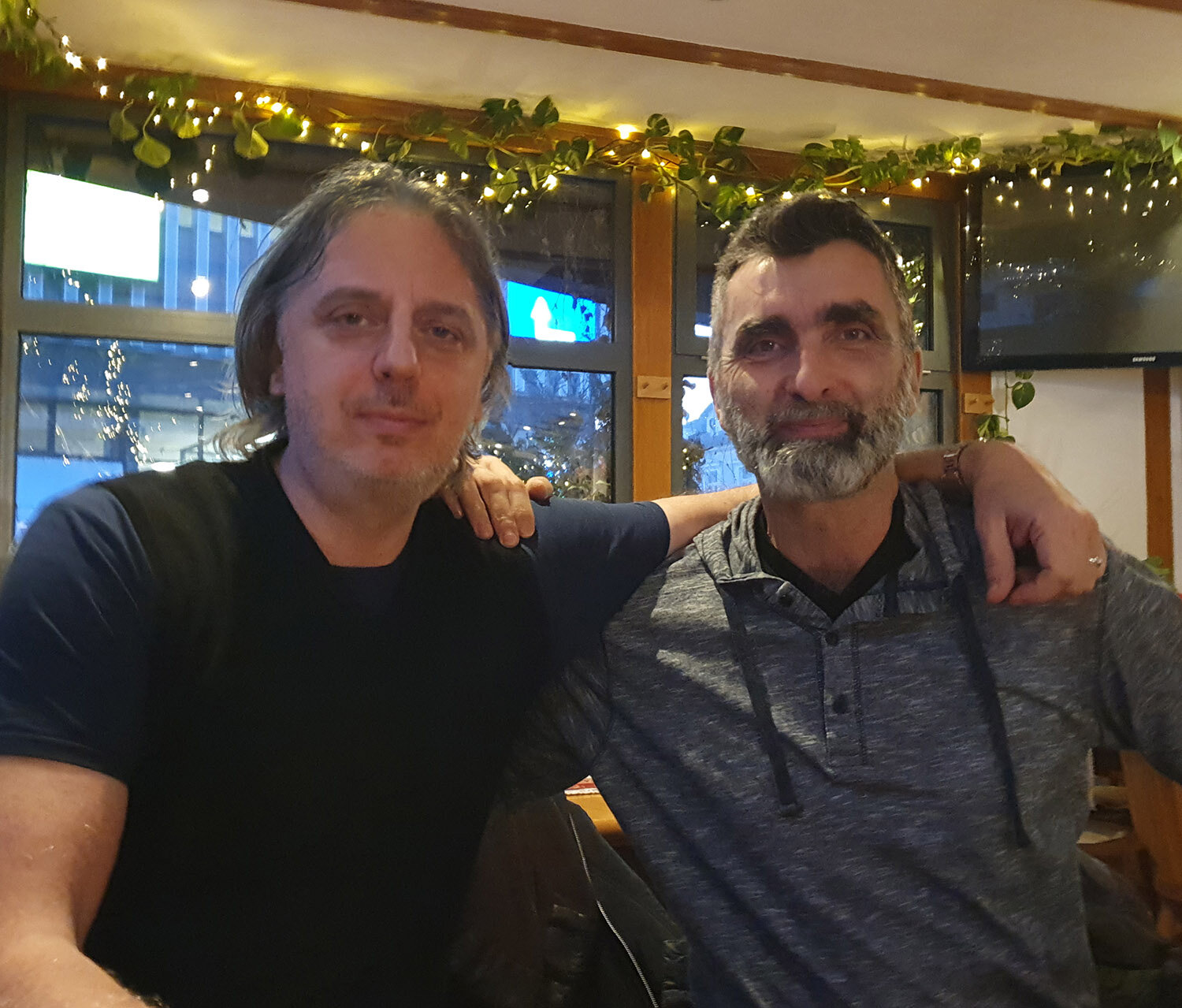For an architectural photographer like myself, a leisurely visit to an overseas country presents the opportunities to discover and photograph architectural gems in which I'm the one choosing the subject, not the clients! Shooting for fun is also a very rewarding exercise for the photographic eye as much as it is for the soul, with an added benefit of spicing up one's portfolio. It's even more interesting when this country is the one you were born in. I didn't think I'd find something new in my own backyard, but I did, and I have my best friend Damjan Bojovic to thank for letting me know about it. (mate, I've known you for 35 years already…? Unbelievable!).
So here's the story about the architectural shoot of St. Michael's Church, from my most recent trip to Slovenia. It was the first building I've shot at the start of a new decade, in January 2020.
Roman Catholic church of St. Michael in Črna Vas, Slovenia, is one of the most prominent works of the Slovenian architect Jože Plečnik, the same guy who designed some of the most iconic buildings and structures in Ljubljana, capital of Slovenia. This church is listed in the Register of Intangible Cultural Heritage of Slovenia.
Quick history about this church, sourced from Wikipedia; initial request to Plečnik to design this church was made in 1922. It was a challenging task, due to the soft ground of the Ljubljana Marshes. Think of a swamp; now imagine building on top of it! Plečnik abandoned his plans to design the church at the height of economic recession in the 1920s which were further exacerbated by extensive floods during this time. But Plečnik returned to the plans of this church in 1935 and finally, after overcoming several hurdles, its construction began in 1937.
Many technological innovations were required to build the church on top of soft marshes, with foundation pillars rammed deep into the mud. Bell-tower had to be separated from the main building and constructed on its own in order reduce its weight which could have caused it to sink into the mud. Further weight reductions called for the bell-tower to feature void, arched openings and a light staircase which was added on its external wall. By far the most prominent feature of this church is its unusual entrance staircase, leading into an elevated church aisle which gives this building its signature look, especially in the context of its gloomy, flat surroundings. It feels as if it was built in anticipation of a flood, in which the church would stand dry above the water, but it is only an illusion, though possibly an intentional one. St. Michael's church is indeed a very unique, timeless piece of architecture.
Plečnik also had to deal with budget constraints (sounds familiar?), so he sourced local materials such as stone from nearby quarry. Timber was mostly donated by the locals. Stone was only used to create the center and the four corners of the church; empty places were filled with concrete sewer pipes and timber. Concrete tiles were used to cover the roof. 2 years later, in 1939, the church as completed and a year later, it was consecrated by Ljubljana's bishop Gregorij Rožman.
The church is considered as one of Plečnik’s masterpieces and is tentatively listed as a UNESCO World Heritage Site, just like the rest of his works, under the entry titles "The timeless, humanistic architecture of Joze Plečnik in Ljubljana and Prague."
Damjan and me planned to shoot the church in the early morning hours in order to avoid the cars from the nearby road, as well as the worshipers. Quick consultation with Photopills app also revealed that the sun would be shining onto the church's front facade at this time of the day, which confirmed the timing of the shoot. But I was also hoping for a moody, early morning light. Winter sun is usually soft, hangs low, is moody and even mysterious, especially in the cold mist hovering above of the marshes. We took the ride to Črna Vas at 7am. In the winter, it's virtually night at this time of the day. But on that day, it was also very foggy. I was worried that the fog would be too thick to see anything, but my fears were allayed once we got to the church, which is less than 20 mins away by car from the center of Ljubljana. The fog was there, but its density was just about right to create a white background which isolated and separated the church from its surroundings. It was such a fascinating sight; the church looked like a ship at sea. It stood quiet and somber, its staircase so inviting, and we couldn't resist climbing it to the top. The church was still closed when we got there, so we couldn't shoot its interiors, but that's fine, one more reason to return! The bell-tower impressed me the most - it's such an odd thing! The handrail-less staircase was an unsettling sight, appearing clearly as a function-less, cosmetic add-on, but it felt strangely appropriate and perfect on that stone wall.
I also liked seeing Plečnik's implementation of his signature front façade blockwork; a pattern comprised of red clay bricks and stone embeddings. It's contemporary and chic even by today's standards. This kind of façade is better known in his most famous creation, the iconic National and University Library of Slovenia.
I live in the UAE where I shoot most of the time, so I know how the Fujifilm GFX100 camera handles high temperatures, sometimes exceeding +50C! But I never shot with it in very cold weather before. It was -9C that morning in the marshes and my camera soon turned into a block of ice, but other than that, it worked fine, and the battery also performed well. I shot about 50 pictures, of which 10 made the final cut. I used only one lens, the Fujinon GF 32-64mm f/4. It's a great lens and like all Fujinons, it's extremely well built, produces very sharp images with almost no distortion or chromatic aberration. It's also compact, so if you're going to travel and only want to bring one GF lens, I'd recommend it to be your bag.
I'm very happy to have shot this amazing building not too far from the city where I was born and look forward to returning to Slovenia soon. Who knows what other architectural jewels are waiting to be discovered…
Hope you enjoyed this blog. Please subscribe to my mailing list so you don’t miss my new post and to keep track of my upcoming photography and time-lapse cinematography workshop!











